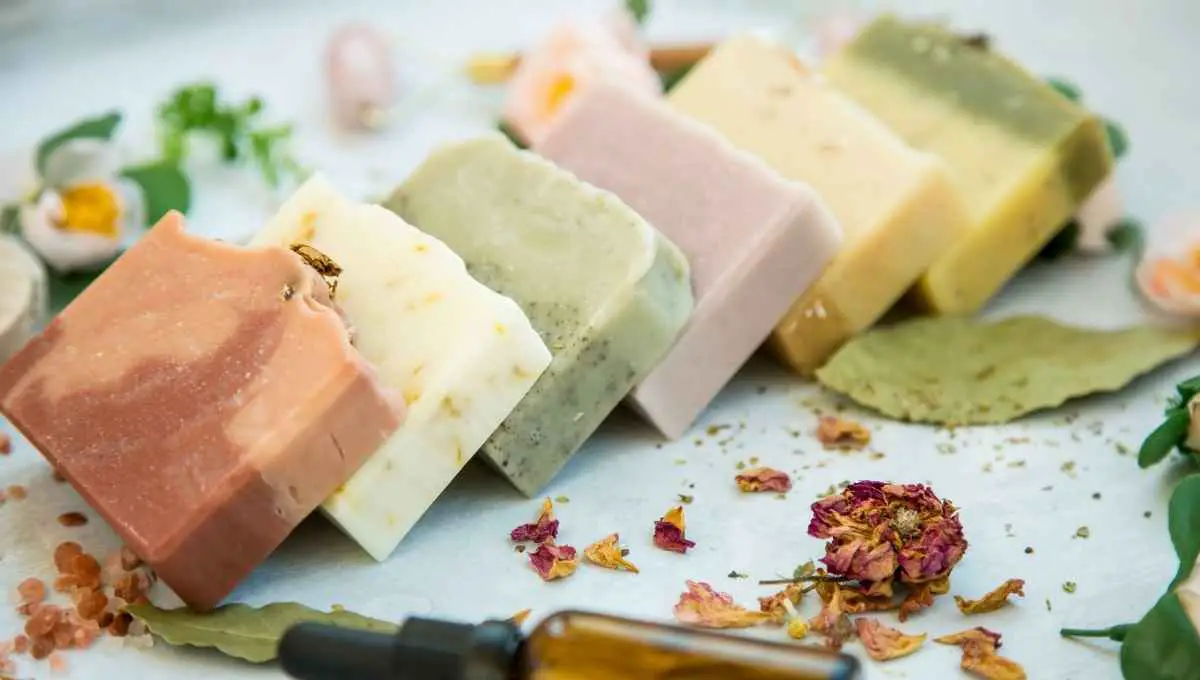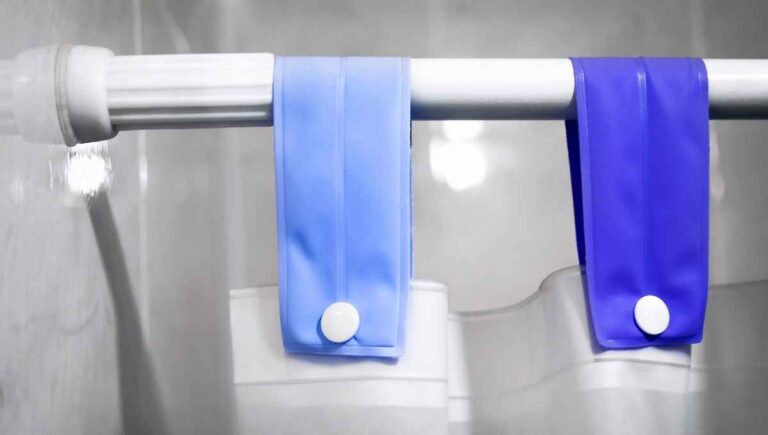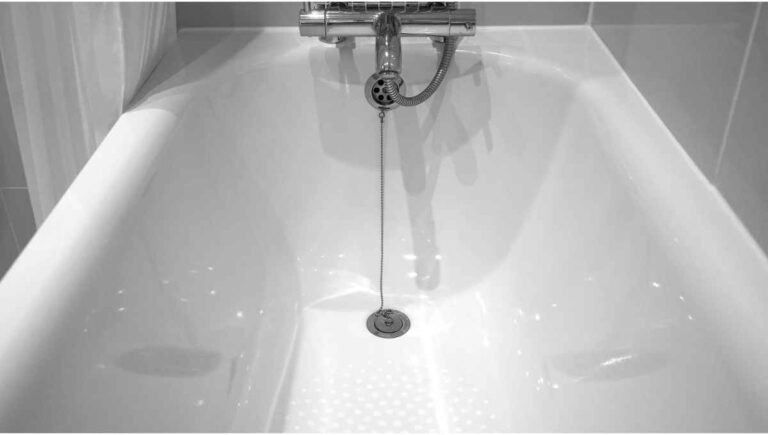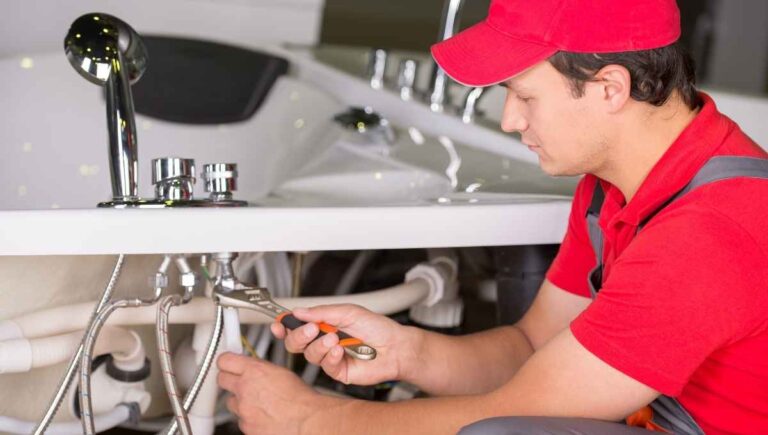Are Toilet Soap and Bath Soap the Same? (3 Big Differences)

It’s hard to tell the difference between many types of soap. For example, do you know whether toilet soap and bath soap are the same? Not knowing this can make anyone have a confusing journey when choosing the best soap out there. Hopefully, we’ll get to the bottom of this now.
Toilet soaps and bath soaps are not the same, although they share diverse yet similar properties. Their biggest differences are the content of the TMF, their quality, and the purpose that they serve. Moreover, another major factor that influences their difference is the way that they’re crafted.
Being uncertain of how to choose the best soap is kind of frustrating, which is why we took the challenge of discussing the differences between toilet soap and bath soap, the chemical content that each type of soap has, and whether liquid soaps are true soaps, or not.
This post contains affiliate links. This means Household Blogger may earn a commission should you make a purchase using any of our links. Please refer to our full affiliate disclosure policy for full details.
Here’s a Quick Pro Tip!
Toilet soaps and bath soaps are different, although they’re made similarly. They differ in TFM content, the quality each has, the purpose they’re for, and the way that they’re crafted.
You can find this information on their label.
Furthermore, we truly believe that you will love these:
1. Turmeric Soap Bar – Enjoy the delight of renewed skin.
2. Lavender Goat Milk Soap – Treats most problematic skin issues, including psoriasis and eczema.
3. All-Natural Bar Soap (for Men) – Because men also deserve some skincare love!
Toilet vs Bath Soap
Toilet soaps and bath soaps are not the same, and often, their uses will vary depending on their chemical compounds. So, let’s explore their differences below!
Can We Use Toilet Soap for a Bath?
Toilet soap can be used to take a bath, as long as it’s handled with absolute care. The reason for this relies on the fact that toilet soaps have compounds filled with higher fatty materials, which is why they’re not recommended for already damaged skin.
Toilet soaps can be used for both the face and body, but they’re not suited for dehydrated skin. This is because they contain more fatty matter than regular soaps, which makes them pure.
And, their purpose is often cosmetic.
What Is the Difference Between Toilet Soap and Bathing Soap?
Toilet soap and bathing soaps are different because they contain different quantities of TFM (total fatty matter). Therefore, when using them, they impact your skin differently. Moreover, they both suit different purposes.
Toilet soaps are often made with higher percentages of Total Fatty Matter (TFM), which is why they are the best at cleaning your face or body thoroughly.
Yet, they are not the best for damaged skin for the same reason.
With bathing soaps, however, this varies. Bathing soaps contain less amount of TFM, which is why it’s more gentle on the skin.
And, most of the time, they’re made with extra ingredients that add moisture to your skin, which is why they’re also called “beauty soaps”.
Although bathing soaps are more gentle on the skin, their cleaning capacity is much less. So, in terms of cleansing, toilet soap has the lead. But, for skincare, bathing soaps are the winner.
What Is the Difference Between Regular Soap and Bath Soap?
While bath soaps are classified as a cosmetic, regular soaps only have the purpose of cleaning. This difference is heavily marked by the FDA, which defines the meaning of true soap and aims to distinguish it from cosmetic soaps.
The FDA defined soap in their regulation terms. Soap is made of salt and fatty acids with the unique intent to clean.
Any other “extras” that a bar of soap has, just like deodorizing purposes, will automatically mark them as a cosmetic.
So, regular soaps don’t have many benefits, other than they clean and can help you wash your body.
And, they’re highly discouraged from using them on the face because of how they can lessen the needed moisture of your face’s skin.
Moreover, bathing soaps are built differently. They often come with extra ingredients that make them fulfill a specific purpose, such as nourishing the skin. An example of a bathing soap is Dove soap.
Dove is often represented as a soap, but since they don’t match the FDA’s definition for soap, they are classified as a cosmetic.
You’ll notice that they are often more gentle and more soothing to the skin, which is why they’re classified as such in the first place.
What Is the Difference Between Bar Soap and Liquid Soap?
The things that influence the difference between bar soaps and liquid soaps go around the way they are made, their consistency, and their benefits. Although, they’re equally effective to remove common pathogens that may be present in your body, face, or hands.
Liquid soaps are built with higher moisture levels. Essentially, they are made with other ingredients that can even promote the collagen on the skin to promote its healing.
Moreover, they are made with emollients, which are elements added to make your skin smoother without harming your skin by removing its natural oils.
So, you can say that they work for both cleaning and cosmetic purposes.
Meanwhile, regular bar soaps don’t necessarily contain more moisture, as they focus more on removing dirt from your body.
So, they are more effective for cleaning purposes rather than for nourishing. Plus, they last longer than liquid soap, so you’ll get to save some cash.
TFM in Soap
Behind every successful soap, there is a total fatty matter to examine. And, they differ depending on how much TFM they have.
But, what is TFM? And why is it important? Now that you know about how toilet soaps and bath soaps differ, let’s learn more about what is TFM.
What Is TFM in Soap?
TFM stands for Total Fatty Matter, and it’s heavily linked with the quality of the soap you have. It describes the number of fatty acids that the soap has, and is often cues to let you know whether this soap is harmful to you or not.
Higher levels of TFM mean that your soap is less harmful, while fewer levels of TFM mean the contrary.
Essentially, you can say that a soap that has higher TFM is more beneficial to you if you want to avoid non-pure materials in your soaps.
The types of fatty acids present in your soap can be classified as oleic, stearic, and palmitic acids. These are important so that your soap can function as it’s intended to.
You might also enjoy our post on If You Can Put Soap in the Toilet
Which Soap TFM Is Best?
Having a soap with higher TFM will guarantee you that your soap will be able to cleanse you without leaving damages that may provoke the appearance of dry skin. However, lower levels of TFM may cause your soap to take away the moisture you need.
The best soaps have higher TFM’s, as they are proven to be less harmful to your skin when you use them for bathing. So, the best TFM should be around 76% to 80%.
Lower levels of total fatty matter, like around 60% or less, may be harmful to the skin.
This is because they will likely retain your skin moisture, leaving your skin dehydrated and therefore provoking you to have dry skin, which is not very good for you.
Which Soap Has TFM 80%?
There is a huge amount of soaps that contain 80% and therefore are classified as healthier. Some of the most renowned brands that have soaps with this level of TFM are Mysore Sandal, Doy Care, and Vedika.
You have the option of getting the Mysore Sandal soap if you’re looking for this percentage.
Soaps that have higher TFM are healthier for your face and skin, so you don’t need to hesitate on getting one.
What Is the TFM in Dove Soap?
Dove is classified as a bathing soap or beauty bar. Therefore, the FDA does not require them to show their number of TFM. However, an approximate estimate could be 60% or less, since they’re classified as bathing soaps and these have lower TFM levels.
I know it might seem incredible, but bathing soaps are not required to show their TFM. Thus, it’s best if you choose an option that you can trust if this is an issue that truly concerns you.
What is a Bath Soap For?
Bath soaps usually have lower TFM than toilet soaps. Their benefits will differ depending on their specific purpose. So, let’s discuss all things about bath soap.
What Are Bathing Soaps?
Bathing soaps are meant to be gentle on your skin. Often, they have lower TFM levels, and the ingredients gentle to the touch. However, they’re not the healthiest options because some may contain detergent components that can be harmful to the skin.
Bathing soaps are more for cosmetic uses, rather than cleaning.
So, it’s common to see them being promoted with labels that indicate that they are either to repair your skin, hydrate it, or soothe it effectively.
Yet, you must be careful if you decide to choose to buy these since not many of them contain the best ingredients.
Some include parabens and other additives that are not healthy for you. So, be on the lookout for those, and if it’s an issue for you, avoid them.
Which Bath Soap Is Best?
There are many bath soaps that you can choose from, but the one that will be the best for you will be determined by your needs. For example, if you’re looking for one that can help you nourish and hydrate your skin, a Dove bathing soap will be better for you.
Bathing soaps come with different purposes. However, you must consider your skin type before buying one.
This way, you’ll avoid damaging it with bathing soaps that may have harmful components to your skin.
Can You Use Toilet Soap for Bathing?
Toilet soap can be used for bathing and washing, but you have to do it with precaution. They are often with high levels of TFM, being an average percentage of 70% – 80%, and therefore, are classified as the best soaps.
You can use them for washing your face, as long as it’s not damaged by any skin condition.
They often contain the purest and rawest components, which is why you have to be careful when choosing one.
What Is the Healthiest Soap to Use?
To determine the healthiest soap you can use, you have to consider your needs. You can’t choose a soap that may harm your skin or does not contribute to its hydration at all. Moreover, the best soaps have natural ingredients you can use without feeling guilty.
Natural ingredients in soaps are better because you are guaranteeing that not only you are making yourself clean, but that you are also taking care of the skin the way it deserves.
And, you’ll also contribute to a healthier lifestyle, which is good for anyone.
What Are Non-toilet Soaps?
Non-toilet soaps include all those soaps that do not have TFM higher than 76%, or soaps whose purposes are not exclusively cosmetic. For example, bathing soaps, regular bar soaps, and liquid soaps are not toilet soaps because they don’t have that.
Bathing soaps, regular bar soaps, or liquid soaps do not qualify necessarily as a toilet soap.
Toilet soaps are mostly used for cosmetic reasons, while other soaps may have other purposes such as skin rejuvenation, and so on.
How is Toilet Soap Made
Knowing about the benefits of bath soaps is intriguing. But, what about toilet soaps? What is their exact benefit and what makes them so special? Let’s talk about them below.
What Is Toilet Soap?
Toilet soap is a type of soap created with different ingredients for cosmetic purposes. Usually, they have high levels of fatty materials and are therefore deemed as healthy. However, people who have problems with their skin should refrain from using them.
They can be used for washing your face, but under certain conditions.
It’s recommended that you make sure that your toilet soap is suited for your skin type and your needs to avoid any complications in the future.
What Is Toilet Soap Made From?
A toilet soap can contain ingredients such as animal fat or vegetable oil, 100% pure lye, distilled water, essential oils or skincare essential oils, and fragrance oils. They are made through a process called saponification.
Essentially, toilet soap is made through saponification, and it’s made out of components that are named triglycerides.
You can check which ingredients your toilet soap has by checking its label.
What Are Toilet Soaps?
Toilet soaps are defined as soaps that are crafted with perfumes and fragrances. Moreover, they’re made through saponification, a process in which the triglycerides and glycerol from bonds of fatty acids break, releasing glycerin and free fatty acids.
Essentially, they’re made through a process that breaks the lipids, which are often non-soluble (this means that they don’t dissolve in water).
Often, toilet soaps are made for specific purposes, even though they’re more focused on cleaning your skin’s surface.
What Is a Toilet Soap Bar Used For?
Toilet soaps clean objects or materials that contain high levels of fatty acid. Moreover, they can be used for the face and, in the case of men, grooming. Additionally, they contain high levels of TFM, which can be detrimental to already damaged skin.
The benefit of a toilet soap is that you can use it for either washing your body or your face. And, sometimes they contain ingredients that are highly beneficial for you, so buying a toilet soap is definitely worth the try.
What Is the Purpose of Toilet Soap?
Toilet soap has the purpose of cleaning objects with highly concentrated acids and fatty materials. For this reason, it’s not good for people who have cracked, dry, or damaged skin in any way. Moreover, they’re classified as a cosmetic and not as soap per se.
So, toilet soaps are for cleaning your face or body thoroughly. Since they have higher TMF, they are better for this purpose.
But, they are not suitable for people who have damaged skin because they can make it worse for them.
So, if you have damaged skin, toilet soap won’t be very good for you because of how pure it is.
You’d need to find a soap that is suited for your type of skin, evidently, or find a soap that is not harsh and that promotes collagen growth for skin repair.
What Is Ordinary Toilet Soap?
When we talk about “ordinary” toilet soap, we are not talking about the “average” toilet soap. The term “ordinary” is used to classify toilet soap. So, when we talk about “ordinary toilet soap”, we are talking about a soap that has synthetic components.
Ordinary toilet soaps are truly frowned upon, and many have complained of how dry and tightened their skin became after its use.
So, it’s pretty evident by now that this soap isn’t good for you if your skin is prone to dry or dehydrate quickly.
Is Toilet Soap Good for Your Face?
Toilet soap is good to wash your face with. But, if you have flaky, cracked, or dehydrated skin, chances are that using toilet soap can cause more damage because of how pure it is. The best option to go for is to buy a soap that can help you fix those skin issues.
Toilet soap can be good for your face, especially if you don’t have anything that damages it. But, if you have flaky skin, you should think it twice.
Many people have encountered experiences where toilet soap has tightened and dried their skin.
It’s adequate to consider buying a specialized type of soap that’s suited for those types of skin sensitivities.
You’ll save yourself from a lot of pain, irritation, and headaches. So, don’t hesitate on getting one that can help you with your skin problems.
What Is a Toilet Soap Grade?
Toilet soap grades are the ways that soap is categorized by its quantity of TFM. There are three grades, and the lowest one represents lower quality soaps. You must check out the label to see what percent of TFM your soap has.
Toilet soap grades are divided below:
- Grade 1 – Represents a minimum of 76% of TFM or higher.
- Grade 2 – Represents a minimum of 70% of TFM or higher.
- Grade 3 – Represents a minimum of 60% or higher.
Usually, the more TFM that your soap has, the better quality it has. This is because of how pure its ingredients are.
The best ones always contain 100% natural ingredients, which is something to never forget.
Best Toilet Soap Brands
There are many toilet soap brands that you can choose from, but we can’t deny that there are ones that are more outstanding than others. You can find these soaps in any store, or online. Remember to always check the level of TFM each soap has.
Some impressive toilet soap brands are:
So, if you are eager to try any of these, don’t hesitate. These soaps are the most loved ones out there. And, it’s not surprising, considering how many benefits they have!
Related Questions
Is Liquid Soap a True Soap?
Liquid soaps often have the same benefits as bar soaps in terms of cleaning and moisturizing. Yet, most liquid soaps contain detergent compounds, which can be problematic for those who are looking for more natural and eco-friendly options.
So, even though liquid soap is a true soap because it’s often made with the same ingredients as a regular bar or bathing soap, it’s very hard to find one that actually contributes to your skin’s health in a positive manner.
And, if you’re the type to care about your environment, you’ll notice that liquid soaps are not very eco-friendly because of the plastic bottles.
Since plastic takes a long time to bio-degrade than other materials, it’s likely to damage the planet if someone is inconsiderate enough to throw it outside a trash can.
So, it’s obvious that someone with these objectives in mind won’t find liquid soaps very lovely.
Is Bar Soap Better Than Liquid?
Bar soaps and liquid soaps don’t differ much when it comes to their features, but there’s no denial in knowing that one has more benefits than the other. Most of the benefits go around their sustainability and longevity.
In terms of sustainability, bar soaps take the lead because they are packaged in carbon boxes. But, if you’re looking to have more moisture, liquid soaps definitely are your go-to.
So, determining which one is better will depend mostly on your preferences.
In terms of longevity, liquid soaps don’t last as much as bar soaps. Liquid soaps often have a short expiration time, which is often 6 months from the moment of opening.
But, good bar soap can last up to a year, therefore it will save you good money.
What Soap Is Real Soap?
Soap is defined by the FDA as a mix of salt and fatty acids that are made with the unique intent of cleaning. Other additives such as smells, fragrances, and benefits that involve skincare will automatically mark it as a cosmetic, and not as a soap.
Basically, we say “toilet soaps” and “bathing soaps” to be able to identify the types of “soap”. But, in truth, these are not deemed as soaps but more as a cosmetic addition to your hygiene.
Additionally, soaps that intend to heal skin damage are classified as drugs by the FDA.
Final Thoughts
Soaps come in different shapes, forms and sizes. Often, their chemical content type will vary depending on how many fatty acids they contain.
Usually, a soap with higher TFM is healthier than a soap with lower TFM.
Moreover, even though toilet soaps are the best because of their high TFM, some people have complained about this soap tightening or drying their skin.
Therefore, you should be extra precautious before buying it if you are prone to dry skin.
Bathing soaps and liquid soaps can be a better option if you have sensitive skin, so you don’t have to hesitate further on getting one that suits you the most.
















